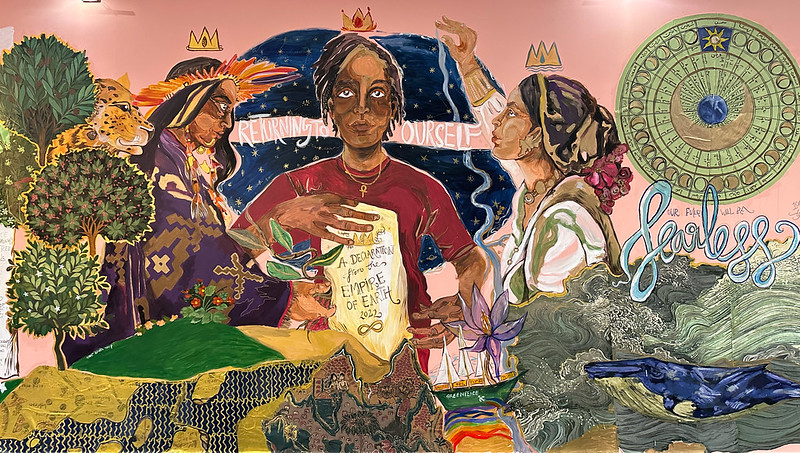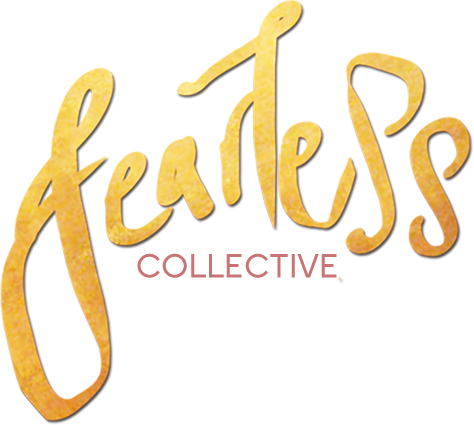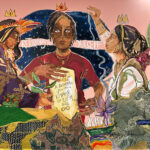
This year was Fearless’ second year painting at the climate change conference. Following on from our collaboration with Greenpeace in 2021 to paint a mural representing indigenous sovereignty and leadership in Glasgow, we collaborated with Greenpeace MENA and the Children and Youth Pavilion to highlight and amplify the voices of global south communities and those most impacted by climate change.
Our campaign ‘At The Root’ looks at women’s voices as narrators to issues of environment and climate change – as those on the frontlines of environmental activism as well as those facing the brunt of adverse climate change impacts. At COP, we seek to bring these stories to an international audience and use visual art to represent alternative and affirmative solutions to climate justice – to counter the often techno-centric, profit-driven solutions espoused by (global north) nation states and corporations.
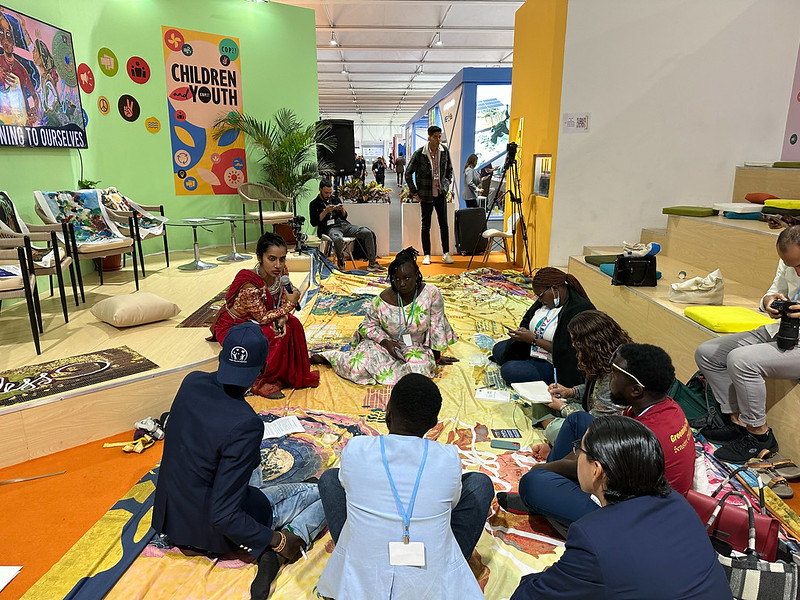
Working in Sharm el- Sheikh presented its own challenges. As a resort town, it was largely cut off from local communities, and due to the political context, working with activists and local groups was not possible. For the conference we had to revisit our Fearless methodology of co-creating public art with local communities, and instead think about how to create something smaller scale but with similar high impact within the conference grounds, while also ensuring the mural was participative and representative of the communities present.
The Blue Zone where we painted was a UN-run space, where delegates and observer organizations from govt and civil society host discussions, panels and side events, exhibits and installations. We were fortunate to partner with the Children and Youth Pavilion – one of the most vibrant and energetic spaces within the blue zone. Young activists representing various groups, networks and coalitions spoke fearlessly on a range of issues encompassing loss and damage, fossil fuels, emissions, displacement and reparations, among others.
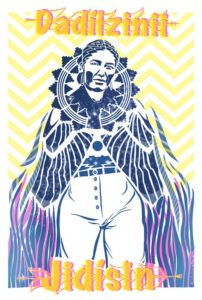
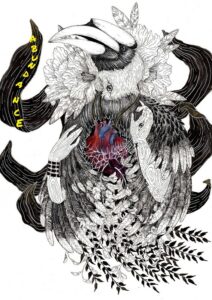

In response to the gaps that we felt at COP26 we launched a campaign titled “Roots and Futures” where we invited artists from around the global south to send in artworks and images that exist as intersections between gender, labor, and climate justice. To create a platform for and amplify the voices of communities that are worst affected by the climate crisis. We received an overwhelming response and artists across Sri Lanka, Pakistan, India, Canada, Venezuela, Ethiopia, Indonesia, Bangladesh, Myanmar, Kurdistan, Uzbekistan, sent in their posters that imagined the future of sustenance, agriculture, healthcare, healing, philosophy, symbiosis and the environment.
We created a repository of climate justice posters that are powerful, uniting and re-root us into a different vocabulary. That makes us take accountability as stewards of the earth and not saviors. These posters can be accessed here.They are open-source and publicly available to be used in rallies, protests and to be taken out onto the streets (with due credit).
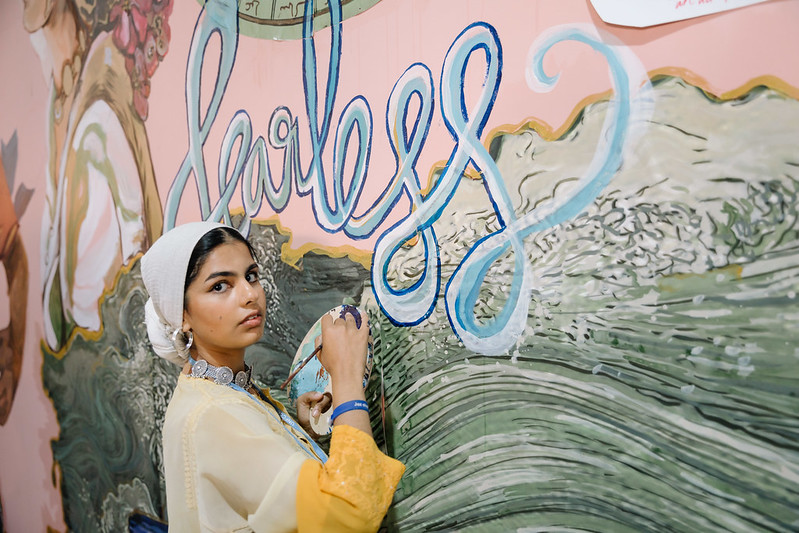
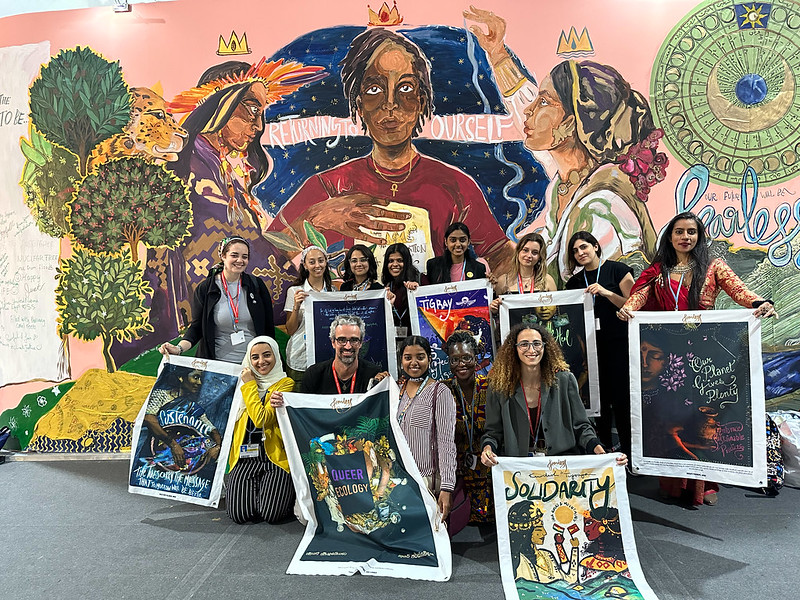
Painted on the threshold of the Youth Pavillion in the Blue Zone are three women:
Puyr Tembe, an indigenous leader from Brazil holding roots in her fingers as a remembrance of our traditional knowledge systems in the global south, Vanessa Nakate from Uganda representing the choices we can make now, and Ayisha Siddiqa from Pakistan reaching into the sky representing a future we can reclaim.
A lot of the conversations at the 27th year at COP are calling us to look at the climate crisis not as a new issue, but a 400 year legacy of colonial and capitalist violence. This mural is a testament to the fearless activists from the global south that are calling for reparations and resurgence at the frontline to world leaders that look at the earth as a commodity.
It reminds us to return to ourselves- the mountains, the stars, the rivers and ways of being that placed us within the empire of the earth, not outside of it
